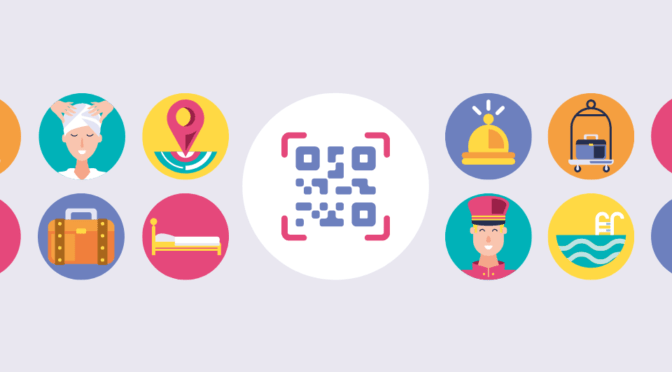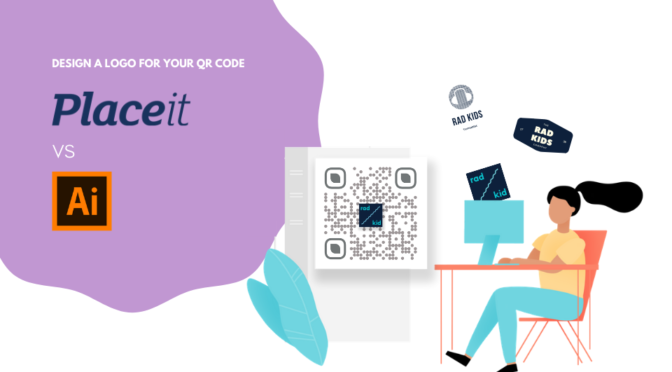The COVID-19 pandemic is now closing out its second full year. That’s two years of new variants, changing public health guidelines, and wide-ranging customer and employee comfort levels that businesses have had to keep up with.
One thing that’s become increasingly clear: businesses that want to survive and thrive must be ready to adapt to change quickly. The key to doing that will be embracing technologies that let them operate in digital and hybrid ways.
Here’s a closer look at how adaptability is tied to viability and how technologies such as QR Codes can help businesses achieve it.
Adaptability is the key to viability
The pandemic has been a globally disruptive force, but it also highlighted a reality that was already here: the world is changing fast. Businesses that want to stay viable have to be able to adapt to changing conditions quickly.
Even within the context of the pandemic, conditions and expectations for businesses have changed dramatically. First was the question of whether to keep physical spaces open, then whether to require masks or proof of vaccination. Then came supply chain disruptions. Today, many businesses are grappling with all these challenges plus trying to figure out how to operate in the midst of unprecedented labor shortages.
But even when this pandemic is behind us, businesses will have to deal with unexpected closures from major storms, which the climate crisis will make more frequent.
And really, change has always been our reality. Think about the ways customer expectations have changed in just the last 20 years: first, businesses had to have email, then a website. Then they had to be on Facebook – until Facebook made it harder for businesses to reach customers. And so on.
Today, businesses are expected to have not only a physical and digital presence but also to make it possible for customers to move easily between the two – to shop online and pick up in-store, for example. Or pay with their phones while they’re in the store. Or attend a live stream of an event from their living room. Of course, you need a fast and optimized device for this. Optimization is possible by removing unnecessary applications or Time Machine backups. Thus, new technologies are expected to help reduce the distance between sellers and potential buyers.
Luckily, meeting those expectations is getting easier with technologies such as QR Codes.
Technology that helps businesses connect physical and digital worlds
For years, low-code website builders like WordPress, Experro, Square, Wix’s AI Website Builder, and Appy Pie’s Website Builder have made it easy for any website to create a digital presence. Easy to install and user-friendly eCommerce themes from Debutify and Magento solutions for eCommerce have also made it extremely simple for businesses to focus on more intricate details of their marketing funnels.
Now, it’s getting easier to make that digital presence more robust. PayPal and Shopify, among others, enable the seamless addition of e-commerce functions to a basic website. Low-code and no-code offerings have made it possible for businesses to create their own apps with little to no development experience.
And when it comes to providing a Phygital experience that seamlessly links a brand’s physical presence to its digital one, one technology stands out above others: the QR Code. Let’s take a look at how.
The starring role of QR Codes
Whether you call it hybrid, Phygital, or the metaverse, the way we interact with brands today involves both the physical and the digital worlds. And because of their unique ability to tie these worlds together, QR Codes are the stars of hybrid interactions.
That’s one reason they’ve skyrocketed to popularity since the start of the pandemic, with QR downloads up 750 percent from 2019 to 2021.
Here are some of the ways QR Codes can help brands bridge the physical-digital divide:
#1 Seamless information delivery
These days, in-person dining often involves scanning a QR Code menu. At hotels, it’s common for residents to scan QR Codes to access all kinds of information.

And when brands use a dynamic QR Code for these and other information-delivery applications, they can make changes as needed without updating the QR Code itself—particularly useful in a world of fast-changing health guidelines.
RELATED: How to change QR Code destination or content without reprinting the code
#2 Contactless payments
Digital wallets (Apple, Samsung, etc.) offer a contact-free way to pay—which is one reason they’ve taken off since the start of the pandemic. But for businesses, accepting digital payments from various providers can be expensive.
Payment QR Codes offer a more affordable alternative that’s also universally accessible to patrons with smartphones. Businesses can partner with a single QR Code provider to generate codes that allow users to pay from a variety of sources (PayPal, Apple, etc.).
#3 CTA Phygitization
Online, it’s easy to nudge customers to follow you on social, sign up for your loyalty program, or write a review. Strategically placed QR Codes can make those transactions just as easy in person, seamlessly directing people to various digital destinations.

These are just a few examples. QR Codes can also be used to send digital coupons, share contact information, give customers your physical location, and more.
RELATED: Find out 30+ types of QR Codes you can use.
Even when we’re past the pandemic and customers are less concerned about contactless transactions, QR Codes will stand out for their ability to make a variety of common encounters faster, easier, and more convenient.
With the right tools, any business can survive a changing, hybrid world
Athletes don’t expect to know how any given event will unfold; instead, they develop skills and experience that will let them respond to any situation they may encounter.
Businesses can take a similar approach to a fast-changing world. While there’s no way to predict the future, those that equip themselves with the technology and knowledge to adapt to changing realities will be able to serve and delight customers no matter what happens next.
Enabling digital connections with every physical object and place on the planet











